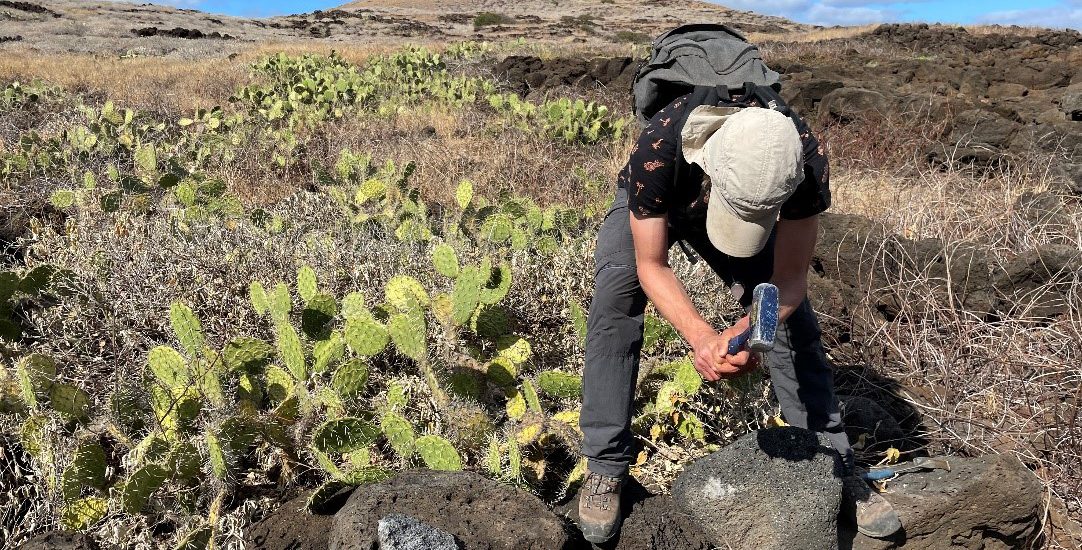
Fieldwork on the Revillagigedo Islands: the challenge and bliss of a geochemical field campaign in a remote uninhabited Mexican UNESCO National Parc
Geochemistry inherently involves significant laboratory work, but a project often starts in the field to collect the target geological samples. The various aspects of geochemical research, and the field work specifically, make it the best job in the world I think. However, organization and planning of the fieldwork are crucial for the success of a research project, especially when the area of interest lies on the other side of the globe in an uninhabited UNESCO National Park.
The where and why
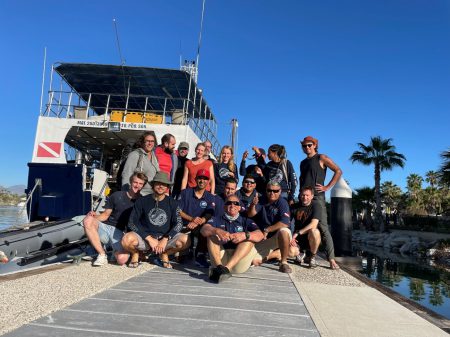
On the 8th of March this year a 10-headed science crew that included specialists in isotope geochemistry (myself), geochronology (Yamirka Rojas-Agramonte) and plate reconstruction (Douwe van Hinsbergen) boarded a ship to sail for 26 hours from Cabo San Jose in Baja California to the Revillagigedo Islands in the east Pacific Ocean. This group of four islands – San Benedicto, Socorro, Clarion, and the Rocca Partida – are located ~ 450 km offshore Mexico on an abandoned mid-ocean ridge.
Our research aim was to understand why these active volcanic islands are there. The hypothesis is that they could potentially result from melting an old subduction-related mantle wedge that was molten again below a (recently abandoned) spreading ridge. To test the hypothesis, we aimed to collect various types of volcanic rocks and river and beach sands to be analyzed in the laboratories of VU Amsterdam and Utrecht in the Netherlands, Kiel in Germany, and San Luis in Mexico. The islands we visited were San Benedicto with its latest large explosive eruption in 1953 and Socorro with its most recent submarine magmatism in 1993.
Preparations
The planning of the trip started in January 2021 and involved arranging funding, a national park research permit, a permit to access the islands, transport to the islands, and a suitable insurance.
The transport possibilities included a helicopter (too expensive), a navy ship that sails to the military base on Socorro Island once per month (too long), or a charter boat usually booked by divers that target the plentiful whales, sharks, or manta rays that swim the seas around the islands. The last option turned out the best and funding was acquired through a Dutch national funding agency grant (NWO-XS).
Application for the permit from the Mexican Government through the National Park administrator was arranged by our Mexican project partner Pablo Davila Harris and involved submitting a form specifying the research objectives, participants, institutions involved, funding bodies, and details about the sampling campaign including the sites of interest, the number and types of samples and sampling methodology.
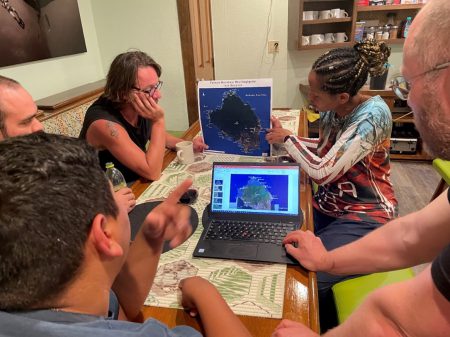
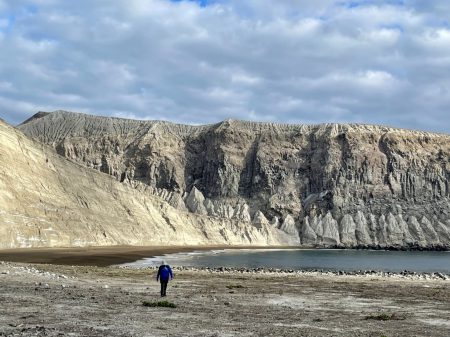
After funding was secured (Sept 2021) and the CONAMP permission was granted (Oct 2021), we sent in two more requests to the Secretaría de Gobernación (SEGOB) and Secretaría de Marina Armada de México (SEMAR) to get permission to land on the islands. A Park Ranger was assigned to join us on the trip, but it was the director of the park who joined us in the end.
Into the field...
The trip involved exciting landings with dinghies that could not reach the shore, requiring swimming and carrying the sampling and field gear at the same time. We climbed steep ash cones and lava flows, had close encounters with wildlife including gannets, sharks, sea turtles, and manta rays, but most importantly successfully sampled both islands. On Socorro we benefitted hugely from the help of the navy, who offered transport by car and quad.
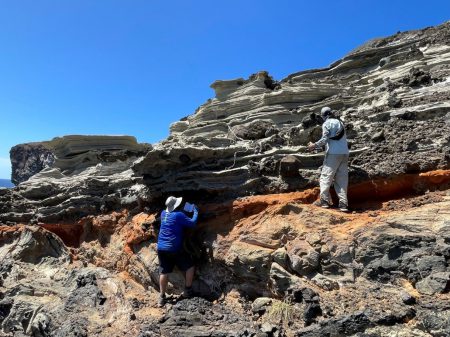
...and onwards to the lab
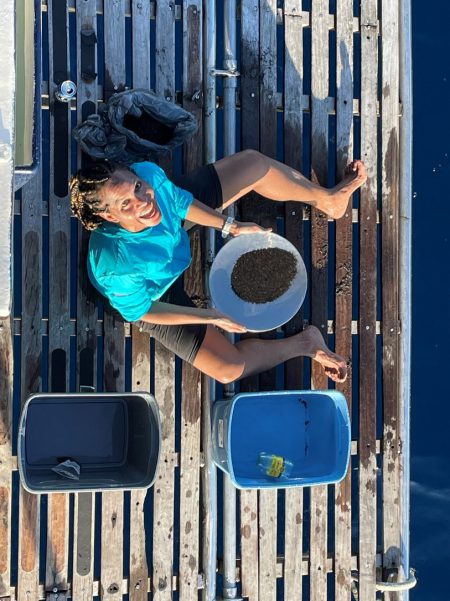
We came back from the field with 150 kg of olivine-bearing volcanic rock samples, 50 kg of felsic scoria and pumices, 30 kg of panned beach sands, and a few hundred rock plugs for palaeomagnetic analyses. Currently the laboratory work is on-going and geochemical data is being produced on the bulk volcanic products, olivine-hosted melt inclusions and zircons.
Keep an eye out on the progress through https://www.geologist.nl/revillagigedo-islands-2022/.
About the author
Janne Koornneef is Associate Professor at the Earth Science Department at the Vrije Universiteit Amsterdam. Her research focuses on the geochemical evolution of Earth’s mantle and the exchange of elements between surficial and deep reservoirs as a result of tectonic processes acting over billions of years. She specialises in the analyses of radiogenic isotopes (Sr-Nd-Pb) in small geological samples such as olivine-hosted melt inclusions or mineral inclusions in diamonds. Janne currently serves on the EAG Council as Early Careers Councillor and is Chair of the EAG Communications Committee.
